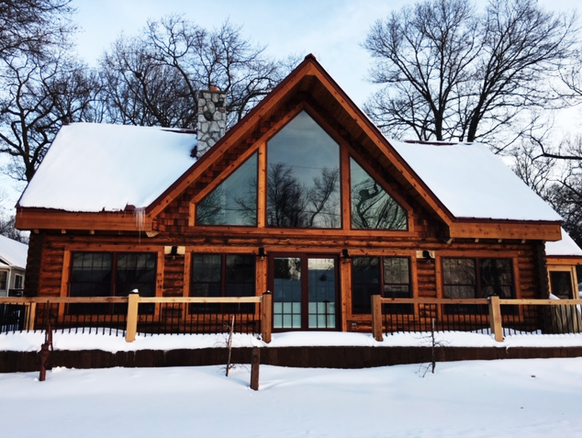BLOG
|
|
SMALL MUSCLE STRENGTH IMPROVES STABILITY AND BALANCE TO EXTEND LARGE MUSCLE ENDURANCE Samantha LeFave answers a question in an article for SHAPE.com that perhaps might only arise when a person takes an aerobic activity fitness class that incorporates dumbbell weights.
If we lift weights we can expect to experience an increase in muscle strength, right? Not necessarily says LeFave, who explains the difference in functional terms and declares that workouts building both should be included our weekly routines. In a nutshell, LeFave indicates, having muscular endurance allows us to continue performing activities of daily living and aerobic exercise for longer periods of times before fatigue forces a halt. “The more endurance you have, the harder you’ll be able to go for a longer distance”, explains one of her referenced experts, whether it’s playing with the kids, doing household chores, or running. Lifting light weights for a high number of repetitions (15-20 for example) falls in the category of endurance building rather than strength building. Lifting weights sufficiently heavy that the number of repetitions leading to exhaustion is only 1 (called a one-rep max), or for which repetition number is limited to 5-8, another expert says, is an activity intended to increase strength. However, with this type of a workout “more is not always better” readers are cautioned. Because form also matters; “quality of movement” is important. As good as this article is in differentiating between muscular endurance and muscular strength it doesn’t address the areas where strength and endurance overlap. Building hip, core, and knee strength helps with balance, which keeps us from wobbling as we move forward, especially when we tire during endurance workouts. The first physical therapist I ever saw, for a knee problem, informed me that poor balance was causing a wobbly gait. The wobbling contributed to the pain I was experiencing. She prescribed both strength building and balance exercises, telling me to always perform the balance routine at the end of the strength session. She also said that once I was running again, balance work should follow endurance work. I complained, explaining it was easier to do them first; I was better at balancing on a single leg when fresh. Exactly she laughed! I am paraphrasing Melissa, when she said “You need to train so that balance will be maintained when muscles are most fatigued. It’s at that point that injury is likely to be initiated, when endurance and muscle strength is exhausted, and your running form starts to break down.” Something like that, anyway. That was 15 years ago when the tendons of my medial thigh muscles were rubbing painfully over a bursa and causing inflammation (bursitis). Another physical therapist, 9 years later, described the relationship between muscle strength and endurance a bit differently. She explained that it was important to build strength in all the small stabilizing muscles of the body, which are responsible for limiting-side-to side motion and maintaining balance, as well as the large leg muscles which propel the body in a forward motion, without wobbling. The more wobble, the more energy must be expended to keep the body upright, which steals that energy from endurance and speed. The more wobble, the more stress placed on big joints like hip and knees, which increases the likelihood of overuse injury like I was experiencing. I have yet to locate scientific articles written in simple terms that I understand, which specifically address the two PT’s advice, but I keep looking. Their explanations make so much sense that I would be surprised to learn they weren’t grounded in science. Of course, there are other variables involved in successful injury-free endurance exercise; this discussion is attempting to explore the areas of overlap between muscle endurance and muscle strength. Most strength exercises can be performed with body weight alone and progression to weights. The routines recommended by the American Academy of Orthopedic Surgery for hip and knee conditioning include these instructions. LeFave’s advice, “the more endurance you have, the harder you’ll be able to go for a longer distance,” should add, “as long as you have enough small muscle strength to maintain stability and balance, and not wobble”! Both are necessary, she agrees. RUN & MOVE HAPPY! https://www.shape.com/fitness/tips/difference-between-muscular-endurance-muscular-strength-definition https://www.orthoinfo.org/en/search/?q=rehabilitation+exercises https://www.mayoclinic.org/healthy-lifestyle/fitness/in-depth/core-exercises/art-20044751
0 Comments
Your comment will be posted after it is approved.
Leave a Reply. |
BRIDGE TO PHYSICAL SELF
Running, walking, and fitness activities enable us to experience our physical selves in a world mostly accessed through use of fingers on a mobile device. AuthorEARNED RUNS is edited and authored by me, runner and founder. In 1978 I began participating in 10K road races before 5Ks were common. I've been a dietitian, practiced and taught clinical pathology, and been involved with research that utilized pathology. I am fascinated with understanding the origins of disease as well as health and longevity. Archives
November 2023
CategoriesNew! Search Box
Earned Runs is now searchable! Check it out...
|


 RSS Feed
RSS Feed